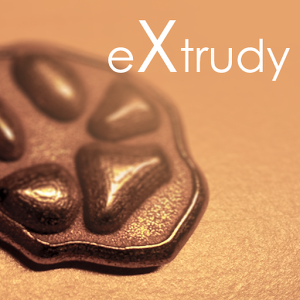
What one project, called eXtrudy is trying to do, is make the process of turning a 2D image into a 3D printable model as simple and easy as possible, and for free.
“eXtrudy is a private and non-commercial project which I’ve started several years ago,” explained Founder Hendrik Wiebel to 3DPrint.com. “When 3d printing services like Shapeways started to get popular, I was really exited about the new possibilities. My first printed 3d object was a little pendant with the paw imprint of our dog and his name on the backside. Shortly after that I’ve created a key chain with an qr code on it. That sounds quite easy, but it took me several hours to do it with freely available software like Gimp, Inkscape, Blender and Meshlab. I thought there must be an easier way to make simple jewelry, medals, key rings, or amulets, because the workflow is always the same. You define the basic shape of an object (heart, cross, star), choose a surface profile (flat, curved, …) and add decoration elements like text, qr codes, engravings. And since I didn’t want to draw everything with a CAD program, I’ve decided to do it based on arbitrary images like photos or drawings, so you could easily turn a child’s drawing into a piece of jewelry or a photo of your footsteps in the sand.”
This is how eXtrudy originated, shortly before being released for Windows-enabled devices approximately a year ago. Wiebel has been busy porting the Windows version over to Android, finally finishing and releasing it on the Play Store just yesterday.
“Basically, it’s a similar principle as the web based 2d to 3d creators from Shapeways or i.materialise,” explained Wiebel. “But their functionality is too limited to create the objects I wanted. I’m too lazy to learn a powerful software package like Blender, so eXtrudy is a good solution for me.”
Wiebel has made over a dozen tutorials for the application available on Youtube, allowing even the most amateur 3D designers like myself, to create 3D printable objects in a snap. Currently the application will only work on ARM based Android tablets, and there are a few features he’d like to improve. Wiebel plans on making eXtrudy work on as many Android devices as possible, before possibly porting it over to iOS. If you have downloaded and used eXtrudy, we’d like to hear your feedback in the eXtrudy forum thread on 3DPB.com. Below you will find one of the latest tutorials for the new applications.